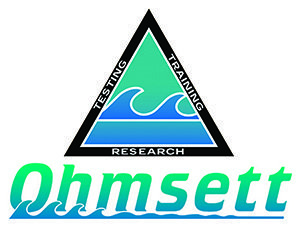Oil Spill Strategies & Tactics at Ohmsett

Course Objective
This is a 3-and-a-half-day course designed to 1) Assist oil spill response and management personnel in the development of skills necessary to make quick and informed decisions during oil spill incidents; and 2) Provide hands-on spill response equipment handling and oil recovery training using full-scale equipment with real oil in the Ohmsett test tank.
Course Description
Spill real oil and clean it up yourself!
The training revolves around hands-on field activities on the Ohmsett test tank using real oil spilled in various sea conditions generated in the tank. Students will deploy and operate boom and skimmer to contain and recover the oil. This program incorporates over eight hours of safety topics (OSHA 29 CFR 1910.120) relative to emergency responders involved in an oil spill incident.
The program also incorporates ICS training and forms. This is a field oriented course and is presented in non-technical language by our spill response instructors. A reference text is complemented by other appropriate materials, including the ICS and IMH forms. A copy of this text will be provided to each student during the course.
Instruction
Instruction for this course is provided by the National Spill Control School (NSCS); a component of Texas A&M University-Corpus Christi Office of Research, Commercialization, and Outreach. Ohmsett will provide professional training services to support the classroom and hands-on portions.
Ohmsett and the NSCS have similar goals, as both organizations were included in Section 2761 of the Oil Pollution Act of 1990 (OPA’90). Within this section of the Act (Section. 2671 (c)(2)(d)), the Interagency Coordinating Committee on Oil Pollution Research was directed to ensure the “long-term use of the National Spill Control School in Corpus Christi, Texas for research and training to improve industry and government ability to quickly and effectively remove an oil discharge”. Because of their shared goals, the NSCS developed a training partnership with Ohmsett, which, under Section 2671(c)(7), directs the Interagency Committee to ensure the “long term use and operation of Ohmsett for oil pollution technology testing and evaluations”.
Location
Ohmsett is located on the Naval Weapons Station Earle in Leonardo, New Jersey, adjacent to Sandy Hook National Park and approximately one hour's drive south of New York City. The heart of the facility is the large outdoor, above-ground concrete test tank, which measures 203 meters (667 feet) long (the approximate length of two football fields), 20 meters (65 feet) wide, and 3.3 meters (11 feet) deep. It is filled with 9.84 million liters (2.6 million gallons) of crystal clear salt water, and is maintained at oceanic salinity levels. For more information on the Ohmsett test tank or on the area, visit the website here.
Ohmsett is a full-scale oil spill response testing and training facility where research and training can actually be conducted on water in a tank and in various sea states with a variety of petroleum products. Unlike classroom or bay training, Ohmsett provides a safe, controlled environment and allows for reproducible oil spill conditions. The Ohmsett facility plays a critical role in researching, developing, and testing the most effective response technologies, as well as preparing responders with the most realistic training available. The test tank offers a “playground” to test new ideas and conduct hands-on training with oil.
Ohmsett is maintained and operated by the U.S. Department of Interior's Bureau of Safety and Environmental Enforcement (BSEE) through a contract with Applied Research Associates, Inc.
Classroom/Field Topics (subject to change)
- Physical and Chemical Properties of Oil
- Site Safety Planning
- Oil Skimmer Selection and Use
- Containment Boom Selection and Use
- Booming and Recovery Strategies
- Documentation and Recordkeeping
- Damage Assessment and Claims
- National Pollution Fund Center
- Interaction with the News Media
- Factors Affecting Oil Spill Movement
- Alternative Response Techniques
- Incident Command System (ICS)
- Contingency Planning
- Shoreline Characterization
- River & Tidal Inlets Strategies
Hands-On Training and Equipment
booming and recovery of oil released into the tank. They will operate a skimmer in calm water one day and in waves the next. Students will witness the effectiveness of this equipment in varying water conditions involving currents and wave action.
Evaluative Criteria
Additional Information
Seminar Fee
Registration
1. To register for this course through the National Spill Control School, please have a credit card
payment ready, click here and pick your desired course date from the schedule.
Note: Registration and security clearance forms will be provided in registration confirmation email.
Please complete and submit the security clearance form at Least 4 weeks prior to your visit.
2. Complete registration and appropriate security forms received in the confirmation email and fax to
Mike Brennan: FAX: (732) 866-7027.
- Make sure to list your phone number and/or e-mail address on the security form in case we
need to contact you. - If you are bringing a camera, list the make, model number, and serial number on the Access Request Form or on a separate piece of paper. If you have any questions, please contact
Mike Brennan, (732) 866-7055.